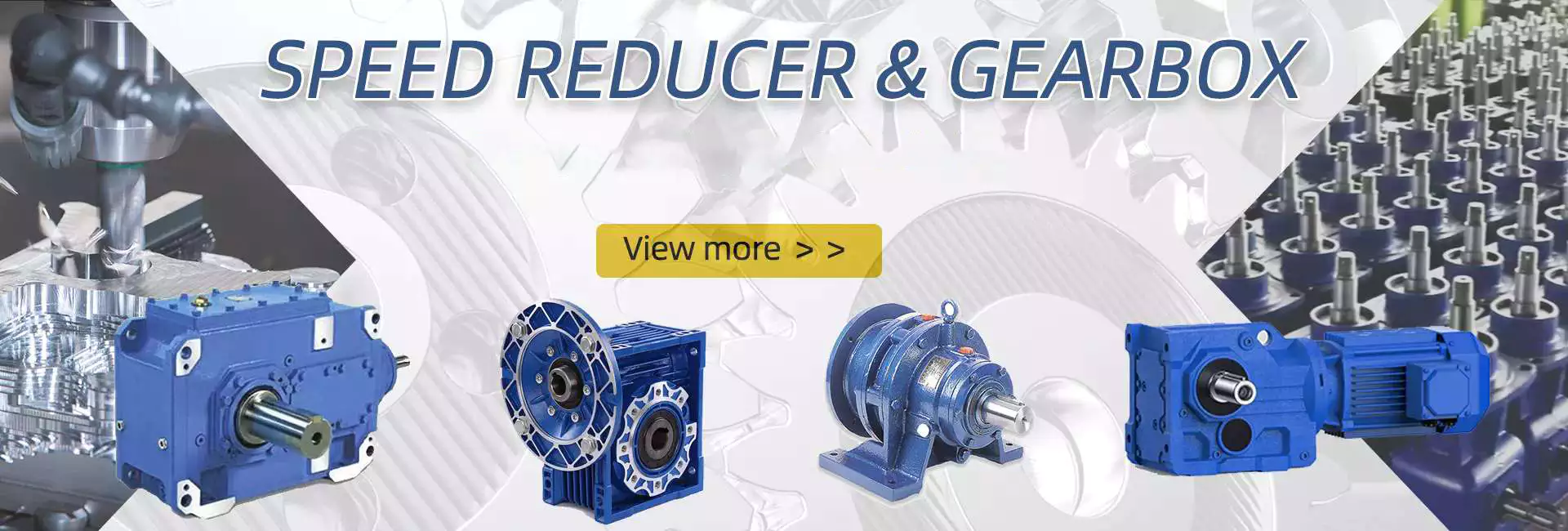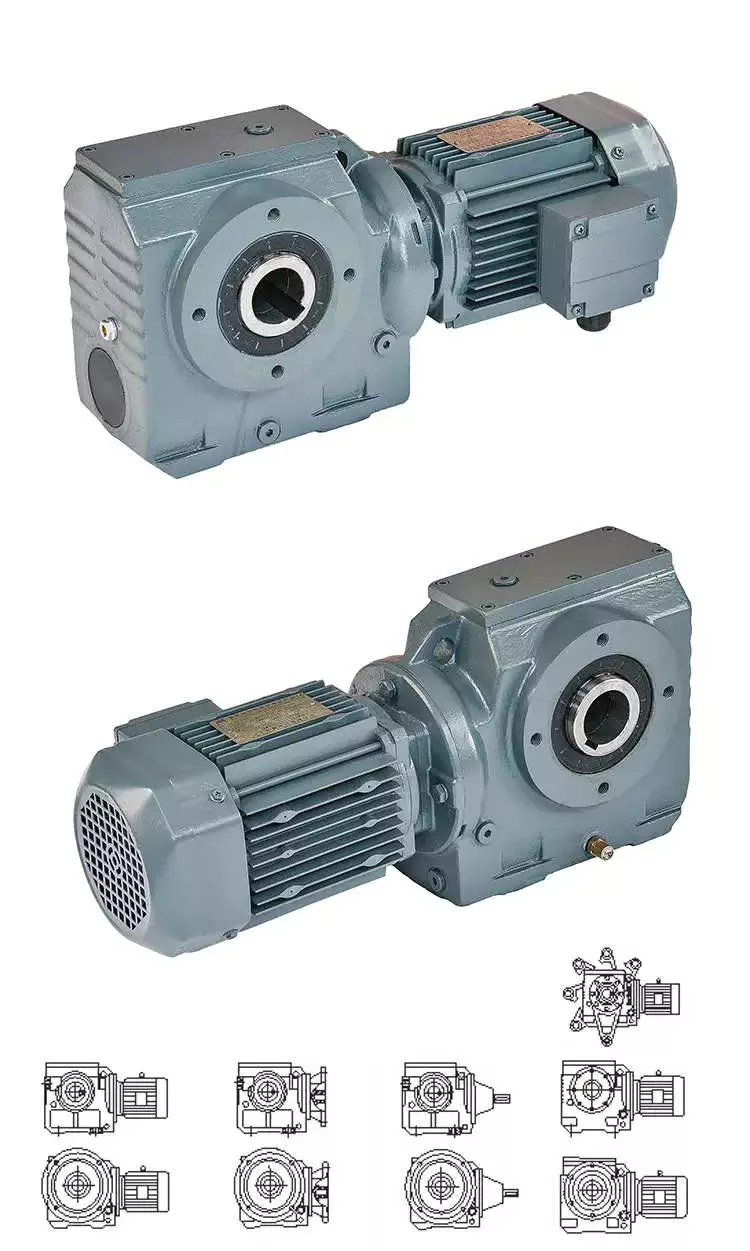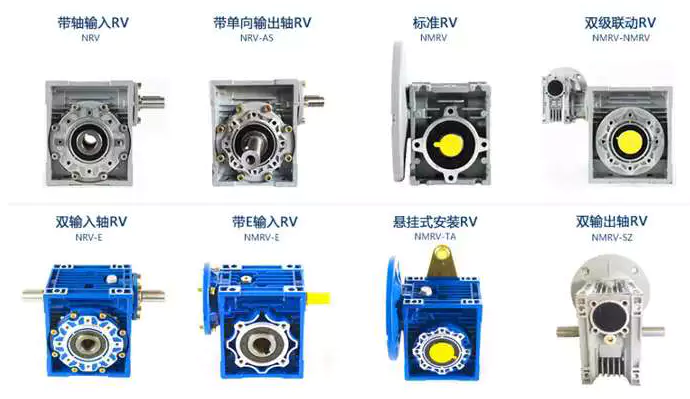Product Description
WP worm gearbox is a new technology item developed by our manufacturing unit on the foundation of bettering WJ series products and combining superior systems at property and overseas. The visual appeal adopts advanced sq. box composition. Its shell is created of higher good quality solid iron. Little quantity, mild bodyweight, high radiation efficiency, higher output torque, smooth operation, low noise. It suits all positions.
The merchandise are widely used in the making equipments of all sorts of industries inside and outdoors China. They are the very best options for presently modern day facilities of mechanical reducing drive control to realize large twisting length, massive gear ratio, tiny noise, large efficiency and security.
one. Attributes:
1) Higher top quality aluminum alloy Motovario like gear box, gentle excess weight and non-rusting
2) Big output torque, secure transmission with reduce sounds
3) Higher heat-radiating deficiency, stylish shape, sturdy service life and modest dimension
four) Appropriate for omni-bearing installation
two. Positive aspects:
one) Easy in running and tiny in volume
2) Substantial in radiating efficiency
3) Sturdy in services life
four) Perform prolonged time in dreadful condition
five) Totally sealed and non-rusting
3. Set up
one)The base-plate must be plane and stoutness and the base-plate must be screwed down and shock proof.
2)The connecting shaft of prime mover, reducer and operation device must be coaxial installation.
three)The diameter tolerance zone of input and output shaft is H6, the holes of fitness(such as couplings, belt-pulley, sprocket wheel and so on) must properly mate the shaft, which prevents bearing from breakage because of over-loose mate.
four)Drivers such as sprocket wheel and gear must be fitted close to bearings in order to reduce bending stress of hanging shaft.
5)While assembling motor of WPD reducer, it is necessary that proper amount of butter applies to the warm shaft input hole and keyway, avoiding assembling too tightly and rusting after using for a long time.
six)When ordering or using all kinds of WPD type, if the motor weight is binger than the common, supporting set is required.
4. Usage
Before using,please check carefully whether the reducer model, distance, ratio, input connecting method,
output shaft structure, input and output shaft direction and revolving direction accord with required.
Technological knowledge:
Torque: 2N.m-3571N.m
Input speed: 1000r/min, 1500r/min
Output pace: .thirty-419r/min
Energy: .04KW-15KW
WP reducer, divided into standard WPS sequence, standard WPD series, common WPA, WPO,WPDA,WPDO,WPDS,WPDS and so on. WP worm equipment and worm reducer is designed on the foundation of WD reducer, the worm is manufactured of forty five # substantial quality steel soon after heat therapy processing and producing, worm equipment with tin bronze forged, dress in-resisting efficiency is very good, specifically on the bearing capacity is much more evident, worm equipment and worm reducer is mainly used in plastics, metallurgy, beverage, mining, lifting transport, chemical reduction drive construction and other mechanical tools.
Rewards
1.Clean transmission, vibration, influence and noise are modest, velocity reduction ratio, wide versatility, can be utilized with a range of mechanical gear.
2.Can be a one amount of transmission to get a more substantial transmission ratio, compact structure, most versions of reducer has a very good self-locking, braking demands of mechanical equipment can preserve the braking gadget
three.worm tooth tooth meshing friction reduction is massive, so the transmission effectiveness is decrease than the equipment, straightforward to heat and high temperature.
four.Larger needs for lubrication and cooling.
5.Good mutual compatibility, worm equipment and worm are made according to national requirements, bearings, oil seals and other standard components.
6.The box body type contains standard kind (the box human body is vertical or horizontal sort with foot board) and universal variety (the box physique is cuboid, with mounted screw holes on numerous sides, without having foot board or one more foot board, and so on.).
seven. There are 2 link modes of input shaft: fundamental sort (solitary enter shaft and double enter shaft) and motor flange.
eight. The place path of the output and input axes is beneath and above the input axes Output shaft up and down Enter axis up and down.
nine. Two or 3 reducer sets can be utilized to type a multistage reducer to obtain a highest transmission ratio.
| Model: | WP40,50,60,70,80,100,120,135,155,175,200,250 |
| Ratio: | 1:10,15,20,25,30,40,50,60 |
| Color: | Green Or Customer Request |
| Noise: | low noise (<50DB) |
| Advantage: | Efficient and safe operating |
|
Material: |
Housing:Cast iron and Copper alloy |
| Worm Gear-Bronze 9-4# | |
| Worm with carburizing and quenching, surface harness is 56-62HRC | |
| Shaft-chromium steel-45# | |
| Packing: | Carton and Wooden Case |
| Bearing: | C&U Bearing |
| Certificate: | ISO9001,CE,3C,OEM |
| Warranty: | 12 months |
| Input Power: | 0.06kw, 0.09kw, 0.12kw, 0.18kw, 0.25kw, 0.37kw, 0.55kw, 0.75kw, 1.1kw, 1.5kw, 2.2kw, 3kw, 4kw, 5.5kw, 7.5kw, 11kw, 15kw |
| Usages: | Industrial Machine: Food Stuff, Ceramics,CHEMICAL,Packing,Dyeing, Woodworking,Glass. |
| IEC Flange: | 56B5, 56B14, 63B5, 63B14, 71B5, 71B14, 80B5, 80B14, 90B5, 90B14, 100B5, 100B14, 112B5, 112B14, 132B5, 160B5 |
| Lubricant: | Synthetic & Mineral |
| Model: | WP40,50,60,70,80,100,120,135,155,175,200,250 |
| Ratio: | 1:10,15,20,25,30,40,50,60 |
| Color: | Green Or Customer Request |
| Noise: | low noise (<50DB) |
| Advantage: | Efficient and safe operating |
|
Material: |
Housing:Cast iron and Copper alloy |
| Worm Gear-Bronze 9-4# | |
| Worm with carburizing and quenching, surface harness is 56-62HRC | |
| Shaft-chromium steel-45# | |
| Packing: | Carton and Wooden Case |
| Bearing: | C&U Bearing |
| Certificate: | ISO9001,CE,3C,OEM |
| Warranty: | 12 months |
| Input Power: | 0.06kw, 0.09kw, 0.12kw, 0.18kw, 0.25kw, 0.37kw, 0.55kw, 0.75kw, 1.1kw, 1.5kw, 2.2kw, 3kw, 4kw, 5.5kw, 7.5kw, 11kw, 15kw |
| Usages: | Industrial Machine: Food Stuff, Ceramics,CHEMICAL,Packing,Dyeing, Woodworking,Glass. |
| IEC Flange: | 56B5, 56B14, 63B5, 63B14, 71B5, 71B14, 80B5, 80B14, 90B5, 90B14, 100B5, 100B14, 112B5, 112B14, 132B5, 160B5 |
| Lubricant: | Synthetic & Mineral |
Worm gear reducer
Cheaper than planetary gearboxes In many cases, worm gear reducers are a popular alternative to planetary gearboxes. A worm gear reducer is a mechanical device with vertical input and output shafts. This allows for very high reduction ratios. They are typically used in high-reduction situations such as machine tools.
Worm gears are cheaper than traditional gearboxes. They also have many benefits, including noise reduction. The output shaft of the worm gear reducer is almost 90 degrees from the motor input shaft, making it ideal for high-torque applications.
The worm gear reducer adopts an aluminum body, which is light in weight and high in operation efficiency. Additionally, they are available with hollow shafts and mounting flanges. In terms of initial cost, worm gear reducers are cheaper than planetary gearboxes. In addition, they have better efficiency and longer service life.
Worm drives are also ideal for portable battery-powered lifting equipment. The high gear ratio of the worm gear ensures that it does not reverse drive. The worm gear has a spring-applied brake that holds the motor in place.
Planetary gearboxes are popular among industrial users. The efficiency of planetary gearboxes is important for practical applications.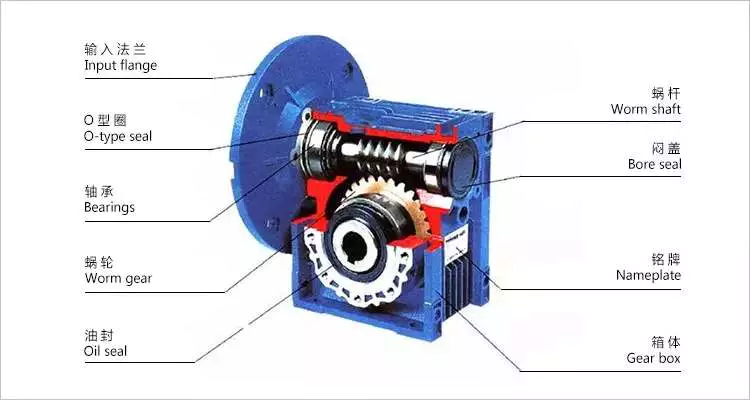
The compact worm gear unit consists of a housing with an inner cavity. It has two side walls, one on either side of the front cover (13) and one on both sides of the rear cover (14). The front end cap is screwed onto the housing and the inner cavity is accessed through the rear end cap.
The compact worm gear unit can be configured to suit your application. They have many advantages, including saving space and increasing torque. The range includes single-envelope and double-envelope versions, available in a number of different power ratings. Additionally, they are IP65-rated, making them ideal for applications involving high radial or axial forces.
The compact worm reducer is a simple but effective worm drive. Its worm gear 16 meshes with the output shaft and rotates relatively stably. It also has a front-end cap and rear bearing. This enables the compact worm reducer to reduce vibration without damaging the output shaft.
Compact worm gear reducers are ideal for many applications and offer high efficiency. The compact design means you can mount them on the motor’s flange or base. Its durable construction makes it ideal for a variety of industries. They are extremely durable and can handle high-pressure and washdown conditions. They also come standard with a synthetic shaft.
high efficiency
High-efficiency worm gear reducers are ideal for applications that require precision, repeatability, and efficient performance. These reducers are designed with state-of-the-art servo motor technology to provide tight integration and an angular backlash of less than two arc minutes. The reduction ratio can be lower if the application requires it.
Rising energy costs have led to an increased focus on the efficiency of drives. In response to this, manufacturers have increased the efficiency of worm gear reducers through a number of technical improvements. By minimizing losses from rolling and sliding friction, worm gear reducers are more efficient than their counterparts.
The high-efficiency worm reducer is simple in design and has the characteristics of a compact structure, high-speed ratio, low power consumption, and self-locking. Other advantages of these reducers include low noise and long service life. Many also have built-in control systems that allow manual and remote adjustments. They also feature automatic shutdown protection and thermal protection.
High-efficiency worm reducers can be used for mechanical acceleration. The input hypoid gear is usually made of steel, while the output hypoid gear is usually made of bronze. Bronze is a soft metal that is good at absorbing shock loads. However, bronze requires work hardening to achieve optimum hardness. For large worm gears, this process can take 300 to 550 hours.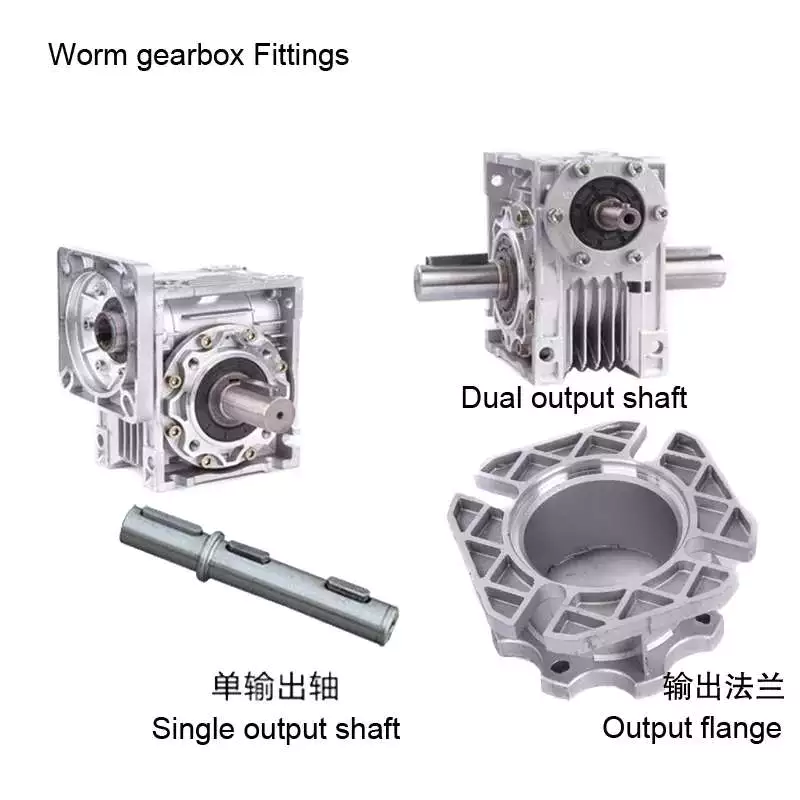
low clearance
A low-clearance worm reducer is a device used to adjust the speed of a rotating shaft. It uses a worm gear consisting of two members. One worm is at one end of the shaft and the other is at the other end. Both worms are screwed into the synchronous drive structure.
Low clearance worm gear reducers can be produced on conventional worm gear production lines without overlapping investments. These units are usually made of soft rubber. Also, they are relatively quiet in operation. These machines are designed so that they are suitable for use in elevators. The softer material in the worm gear also helps absorb shock loads.
The tooth profile of the worm gear is designed to change with the axial movement of the worm. Worms have thinner right teeth and thicker left teeth. As the worm moves to the right, its teeth mesh with the worm gear, reducing backlash.
There are many different types of worm gears. The design of gears depends on many factors, including backlash, thermal design, friction factors and lubrication. Worm gears are made of several different materials. Some different types of materials used in worm gears require special lubrication.
quieter
The quieter worm reducer is designed to reduce the noise level of the rotating gear motor. The device has more gear teeth in meshing contact with the gears, which helps it run more quietly. In addition to being quieter than other transmissions, it’s also less expensive than its counterparts.
Worm gearboxes can be used for different applications, but they are not as efficient as helical gearboxes. Worm reducers are cheaper but less than 90% efficient. Higher gear ratios reduce efficiency, so worm gear reducers are better suited for applications that require low-speed torque. The cost of buying a worm gearbox will depend on the horsepower and gear ratios required.
Worm reducers are also more comfortable to use than planetary gearboxes. They don’t vibrate and heat up quickly, making them an excellent choice for low to medium horsepower applications. Worm gear reducers can be upgraded to improve their performance by combining with other gear trains or gearboxes.
easy to replace
An easily replaceable worm gear reducer can save you a lot of money. A worm gear reducer is part of a chain drive and allows you to change gear ratios quickly and easily. Worm gear reducers can be easily replaced in a number of ways. It’s a good idea to read the manufacturer’s manual before replacing a worm gear reducer. Make sure you have the instructions available so you can refer to them in the future.
Worm gear reducers offer many advantages, including long service life and low noise. They are also designed with a 90-degree output shaft for easy installation. Another advantage of these gear reducers is that they can be used with both solid and hollow output shafts. This means less maintenance and downtime.
Worm gear reducers are widely used. Most gear manufacturers have large inventories. Worm gears also have uniform mounting dimensions. Dimensional consistency means you don’t have to worry about matching the shaft length and diameter to the worm gear. You can easily find a replacement worm gear reducer for your equipment.
When replacing the worm gear reducer, check the lubricating oil recommended by the machine. If not included, use original gear oil. Be sure to follow the manufacturer’s instructions carefully.


